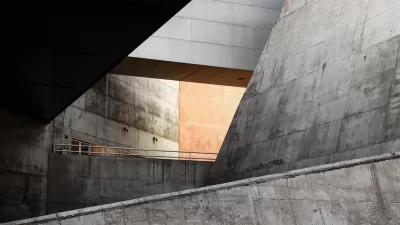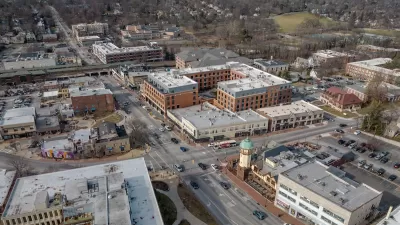If you’ve ever worked in distressed communities, you’ve faced the dilemma that there simply is no private market for what you want to see built. You can chip away at the problem of vacant land with thoughtful affordable housing developments or, if you’re lucky, a new recreation center but by and large, large amounts of vacancy remain and impact the psyche of those that live nearby. So working closely with residents, and really listening, has sparked a whole new sub-discipline in our world of urban planning and design - temporary use. The shrinking cities movement shined a light on the potential of ad-hoc reuse and programming some time ago but so too has groups like the Pennsylvania Horticultural Society
If you've ever worked in distressed communities, you've
faced the dilemma that there simply is no private market for what you want to
see built. You can chip away at the
problem of vacant land with thoughtful affordable housing developments or, if
you're lucky, a new recreation center but by and large, large amounts of
vacancy remain and impact the psyche of those that live nearby. So working closely with residents, and really
listening, has sparked a whole new sub-discipline in our world of urban
planning and design - temporary use.
The shrinking cities movement shined a light on the
potential of ad-hoc reuse and programming some time ago but so too has groups
like the Pennsylvania Horticultural Society's Philadelphia Green program which
has taken the idea of temporary greening to the scale of thousands of city
lots. Public art, events and tours are
all, I hope, becoming a regular part of our planning world.
So armed with the Cleveland Urban Design Center's recently released
(and fantastic) Pop-Up City book on temporary and interim uses, Infill
Philadelphia challenged teams of designers to take the idea of temporary use to
some of Philadelphia's vacant industrial sites.
After four hours of brainstorming, the design teams presented
a range of ideas to a diverse panel of artists, designers, neighborhood leaders
and city representatives. While there
were some great ideas, it was interesting to see that many trained designers
still struggle with the idea of temporary.
There was clearly some concern that "temporary" would equate to "wasteful"
thus resulting in many ideas for something built or fixed.
This is an opportunity to productively bring people
together which is never wasteful. Many communities have built capacity and strong local leadership
by just going out there and doing things.
For me, the more poetic and interesting results of the
charrette emerged when teams put aside the idea that something had to be built
but instead started with a program. Urban camping? I'm all for it.
So as the keynote speaker and panelist David Belt said, "just
do it." Take a guerilla approach to
interim uses and see what can be done with limited dollars. Better yet try to stretch that little bit of
money to create a use and maybe something built that is an attention
grabber. So many of the areas where temporary
use can be immensely helpful are off the map and overlooked. Interim uses are an opportunity to discover
something about our cities, in the case of this charrette, Philadelphia's
industrial heritage.
It's why charrettes like this are so important. The ideas sparked debate and encouraged
planners, designers and residents to start seriously talking about both the long-term issue of
industrial use but also the short-term reuse of vacancy.

Alabama: Trump Terminates Settlements for Black Communities Harmed By Raw Sewage
Trump deemed the landmark civil rights agreement “illegal DEI and environmental justice policy.”

Planetizen Federal Action Tracker
A weekly monitor of how Trump’s orders and actions are impacting planners and planning in America.

Why Should We Subsidize Public Transportation?
Many public transit agencies face financial stress due to rising costs, declining fare revenue, and declining subsidies. Transit advocates must provide a strong business case for increasing public transit funding.

Understanding Road Diets
An explainer from Momentum highlights the advantages of reducing vehicle lanes in favor of more bike, transit, and pedestrian infrastructure.

New California Law Regulates Warehouse Pollution
A new law tightens building and emissions regulations for large distribution warehouses to mitigate air pollution and traffic in surrounding communities.

Phoenix Announces Opening Date for Light Rail Extension
The South Central extension will connect South Phoenix to downtown and other major hubs starting on June 7.
Urban Design for Planners 1: Software Tools
This six-course series explores essential urban design concepts using open source software and equips planners with the tools they need to participate fully in the urban design process.
Planning for Universal Design
Learn the tools for implementing Universal Design in planning regulations.
Caltrans
Smith Gee Studio
Institute for Housing and Urban Development Studies (IHS)
City of Grandview
Harvard GSD Executive Education
Toledo-Lucas County Plan Commissions
Salt Lake City
NYU Wagner Graduate School of Public Service






























